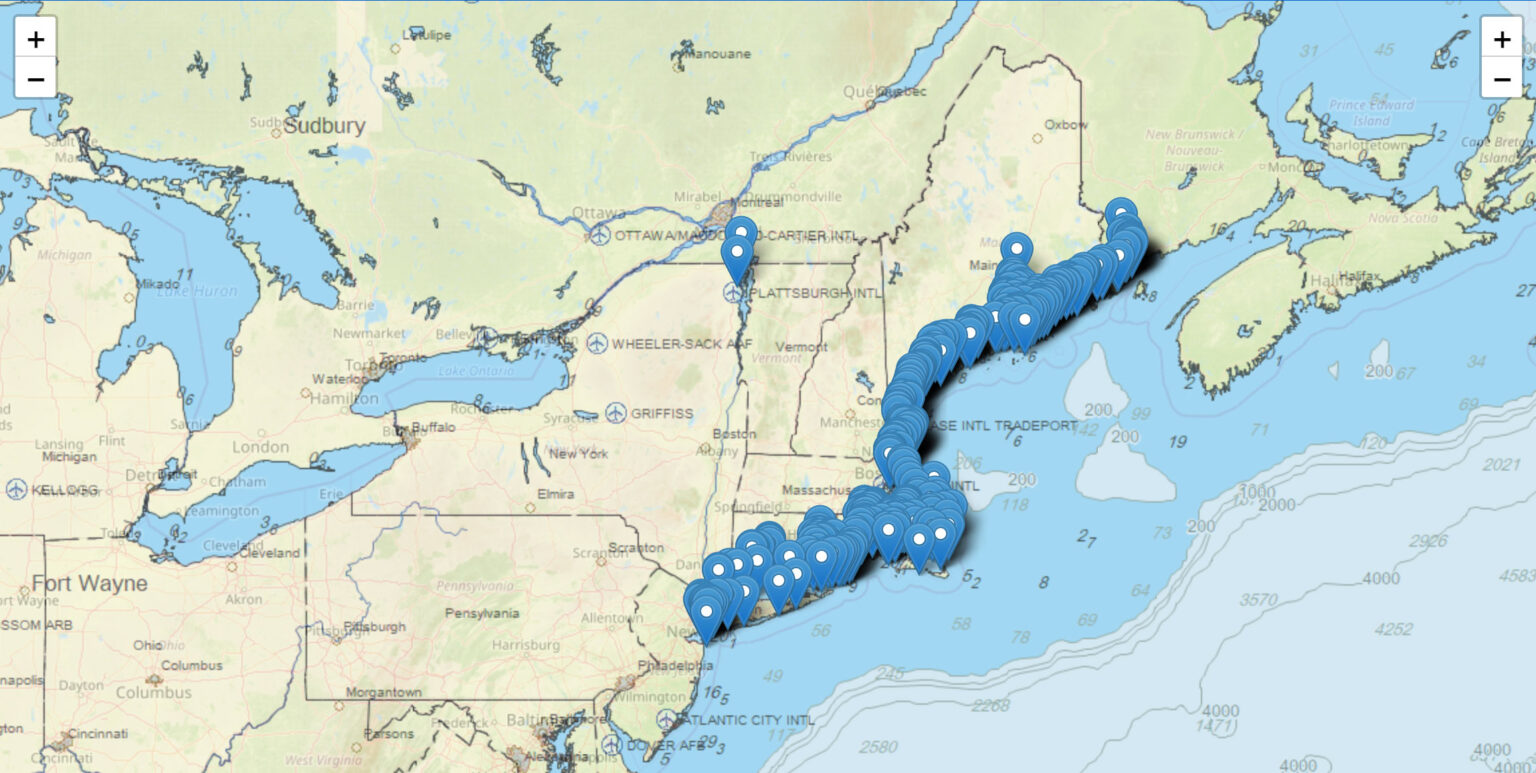Removing navigation aids may have consequences
The maritime community is closely monitoring the recent proposal outlined in US Coast Guard Local Notice to Mariners (LNM) 01-16-2025 (https://www.navcen.uscg.gov/sites/default/files/pdf/lnms/LNM01162025.pdf).
This notice proposes the removal of 350 aids to navigation (ATONs) along the New England coastline as part of a streamlining effort. These aids, such as buoys, lighthouses, and other visual or electronic markers, serve as vital tools to better ensure the safe and efficient vessel passage through often treacherous waters.
The proposed changes have sparked concern among mariners and commercial vessel operators who worry that the removal of these aids could results in significant consequences for maritime safety.
The above illustration reflects the approximate location and identification of ATONs proposed for removal based on a manual review of the LNM 01-16-2025 (see link to Great Harbor Digital’s full disclosure).
These ATONS are critical in preventing accidents and helping vessels navigate in various weather conditions and at night. They are especially important in areas with narrow channels, shallow waters, or strong currents, where the risk of collisions or grounding is higher.
Proposed changes in LNM 01-16-2025
According to LNM 01-16-2025, the US Coast Guard has announced the removal or deactivation of several navigation aids in key maritime routes. The rationale provided for these changes includes:
• Cost reduction: The Coast Guard suggests that maintaining certain navigation aids is becoming increasingly expensive, especially in remote or low-traffic areas.
• Technological advancements: The growth of GPS and modern electronic navigation systems is seen as an alternative to traditional aids.
• Environmental concerns: Some aids, particularly buoys, are said to have adverse environmental effects, such as disrupting marine life or contributing to marine pollution.
While technological advancements have indeed improved navigation, they are not foolproof. Heavy reliance on GPS systems, for example, raises concerns over vulnerability to signal jamming, interference, or even cyberattacks. In addition, environmental considerations, though important, must be balanced against the operational needs of the maritime industry.
Potential consequences
• Increased risk of navigational errors. Mariners, especially those operating in congested or challenging waters, rely on multiple navigation aids to stay on course. The removal of critical markers could lead to disorientation, particularly during poor visibility/fog, inclement weather, or at night. Without reliable markers, the risk of running aground, colliding with other vessels, or hitting underwater hazards increases significantly. As GPS accuracy can vary between 8 and 30 feet, in tight channels, the need for physical ATONs to visually confirm a boat’s location is all the more important.
• Single technology dependence. If the proposal goes through, mariners will need to rely more heavily on electronic navigation systems, leading to greater dependence on a single technology. The loss of redundant navigation aids (both visual and electronic) would place more pressure on officers, who would need to compensate for their absence by constantly monitoring alternative systems.
• Disruption to emergency response operations. Navigation aids can be important during search-and-rescue missions. Their removal could slow down the process of locating distressed vessels, particularly in areas with high shipping traffic or at night. A lack of visible markers may also complicate the ability of rescuers to quickly and efficiently reach those in distress.
Conclusion
The proposed removal of navigation aids outlined in LNM 01-16-2025 has the potential to undermine maritime safety, especially for mariners navigating in difficult conditions or unfamiliar waters. While technological advancements in navigation are essential and promising, they cannot entirely replace the need for traditional aids. The removal of these vital markers could result in more accidents.
Comments on the proposal ended June 13. For those GLCC members who may be looking to complete the Great Loop or Down East Loop, changes to these ATONs will be of significant importance in their planning.
Additionally, these types of reductions in ATONs may also be proposed for the Great Lakes, connecting tributaries and routes.
Please stay alert for any updates you may hear and forward any to Dee McClure (waterbeachsail@gmail.com) so that we may share with the GLCC membership as applicable.


 (Here is the link to USCG)
(Here is the link to USCG)